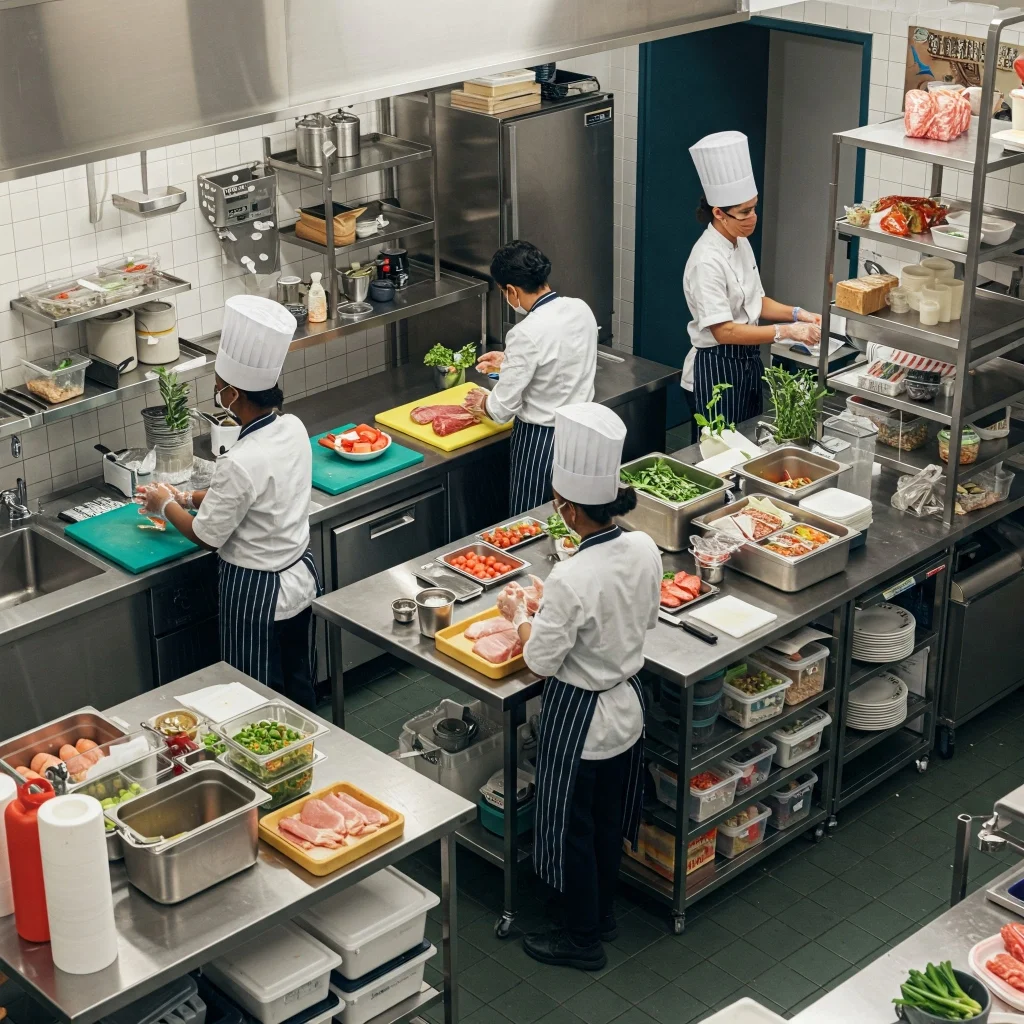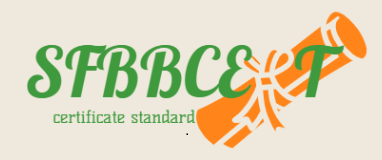
Adhering to food hygiene principles in your business ensures that the food you prepare and serve is safe and does not cause food poisoning. Therefore, when starting a food-related business, it is crucial to implement proper hygiene practices from the very beginning.
Maintaining food hygiene is essential in all food establishments, including restaurants. The SFBB (Safe Food, Better Business) standard serves as a practical guide to help businesses prepare and serve food safely and hygienically.
Public health experts and international organizations such as the World Health Organization (WHO), Food and Agriculture Organization (FAO), and the Centers for Disease Control and Prevention (CDC) have established global food safety guidelines. These principles aim to ensure that food is produced, stored, prepared, and consumed in a safe and sanitary manner, minimizing the risk of foodborne illnesses. These guidelines are useful for food producers, restaurants, and even home consumers to prevent food poisoning.
One widely recognized framework is the 4Cs of Food Hygiene:
Cleaning
Cooking
Chilling
Cross-contamination
Following these principles reduces the risk of foodborne illnesses and ensures food is safe to consume.
1. Cleaning
Wash hands, work surfaces, and cooking utensils before and after handling food—especially raw meat, poultry, fish, and eggs.
Use warm water and soap for handwashing and sanitize surfaces with appropriate disinfectants.
2. Cooking
Cook food to the correct temperature to kill harmful bacteria. Different foods require different internal temperatures.
Use a food thermometer to ensure the proper temperature is reached during cooking.
3. Chilling
Store food at appropriate cold temperatures to prevent bacterial growth. Cooked foods should be cooled quickly and stored in the refrigerator.
Keep refrigerator temperatures at 5°C or below.
4. Cross-contamination
Prevent the transfer of bacteria from raw to cooked or ready-to-eat foods.
Use separate utensils and surfaces for raw and cooked foods and store them separately in the fridge.
By following these food hygiene principles, you can reduce the risk of contamination and ensure food is stored and consumed in safe conditions.
Proper Food Storage
Proper storage of food protects it from bacteria, chemicals, contaminants, and other harmful agents.
Dry Storage (e.g., pasta, rice, flour):
Temperature & Humidity: Store in a cool, dry place to prevent mold and bacterial growth.
Packaging: Keep food in its original packaging or airtight containers to avoid pests and contamination.
Expiry Dates: Check expiration dates and discard old or expired products.
Stock Rotation: Place newer items at the back and older ones at the front for timely use.
Refrigerated Storage:
Temperature: Keep your fridge at 5°C or lower to prevent bacterial growth.
Separation: Store raw and ready-to-eat foods separately to avoid cross-contamination.
Covering: Cover foods or store them in sealed containers to prevent drying and odor transfer.
Cleaning: Regularly clean the refrigerator to avoid contamination.
Freezer Storage:
Temperature: Keep your freezer at -18°C or lower.
Packaging: Use freezer-safe packaging to prevent freezer burn.
Labeling: Label items with content and date for easier tracking.
Organization: Avoid overloading to ensure proper air circulation.
Safe Food Transportation
When transporting food, it’s important to prevent contamination from dirt, bacteria, and other pollutants. These precautions help maintain both food safety and quality.
Use Proper Packaging: Food should be transported in sealed, durable containers that are resistant to moisture, insects, and contaminants.
Maintain Temperature: Keep cold and frozen foods at the correct temperatures during transport using cooler bags, insulated boxes, or refrigerated vehicles.
Separate Raw and Ready-to-Eat Foods: Raw foods (e.g., meat) must be kept separate from fruits, vegetables, and cooked foods to avoid bacteria like Salmonella and E. coli.
Cleanliness: Clean and disinfect hands, containers, and transport equipment before and after use to prevent contamination.
Staff Training
In the food industry, staff training and supervision in food hygiene are crucial. It not only protects consumer health but also enhances food quality, boosts brand credibility, and increases customer satisfaction.
Importance of Health Cards
Anyone involved in preparing or selling food must have a valid health certificate.
Training Methods:
On-the-Job Training: Teaches employees essential skills while they work in real conditions.
Self-Study: Allows staff to learn at their own pace through educational materials.
Relevant Experience: Employees with prior experience may already possess important hygiene knowledge.
You can also join our online courses covering food safety training for businesses, including modules on food allergens.
Personal Hygiene
Personal hygiene for you and your staff plays a key role in maintaining food safety and enhancing restaurant hygiene. It not only prevents food contamination but also improves the quality of food served to customers.
Handwashing: One of the most effective ways to prevent the spread of germs. Employees must wash their hands before and after handling food, after using the restroom, sneezing or coughing, and touching garbage.
Uniforms: Wear clean, designated work clothing (like aprons) to avoid transferring contaminants from personal clothes to food. These should be used only at work and cleaned regularly.
Ongoing Training: Regularly train staff on personal hygiene, proper food storage, and preparation practices. This should include correct handwashing, using clean uniforms, preventing cross-contamination, and more.
For more information about personal hygiene, click here.

No comment